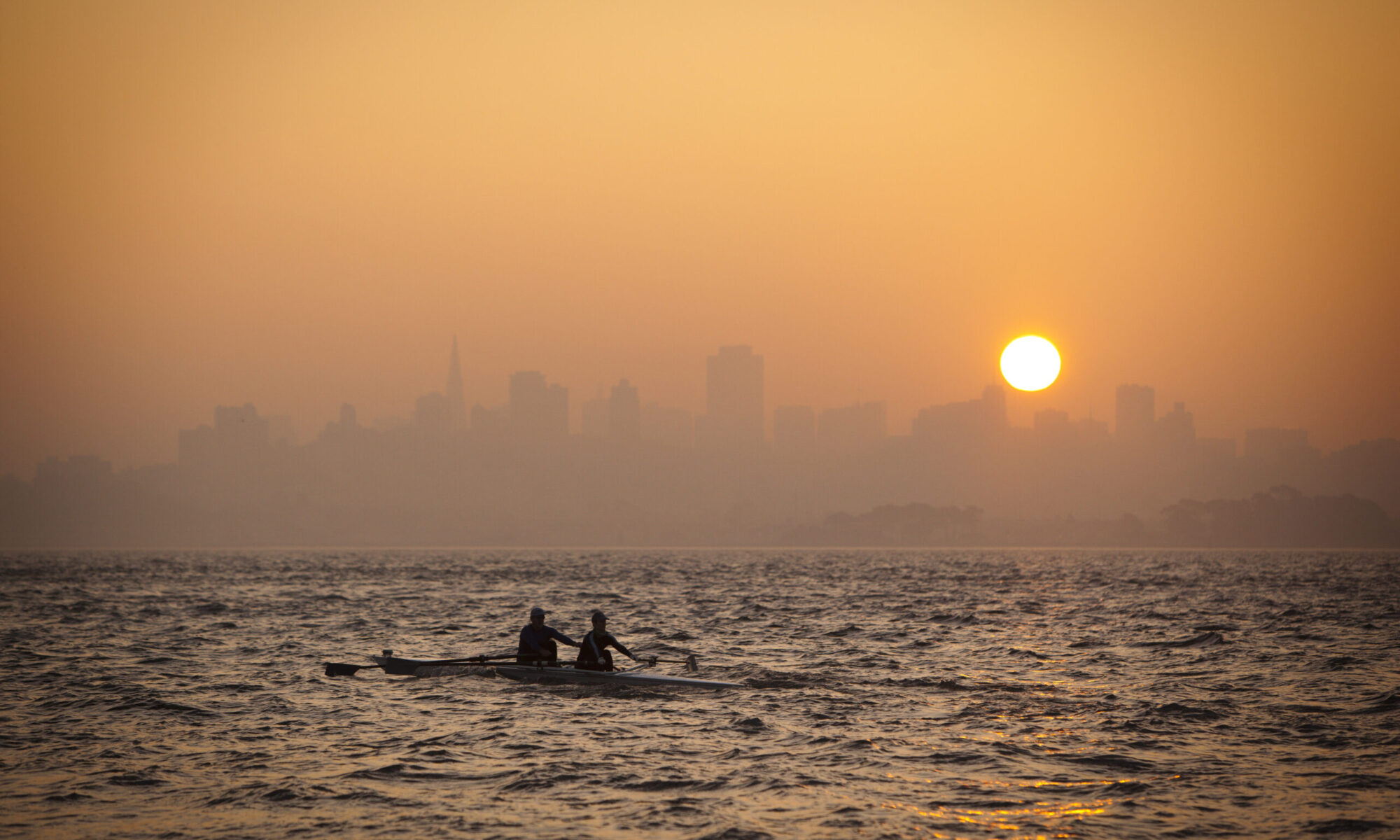Transportation
To carry your shell on top of your car, you will need good modern racks, because of the boat’s length. Remember your investment, and don’t scrimp on cheap racks designed to carry surfboards that are a third the length and a fraction of the weight. Yakima and Thule make excellent rack systems, with saddles that fit the shape of these shells. They even have units that attach to aerodynamically shaped (no rain gutters) cars. Burnham Boat Slings, Hudson and others make car top carriers designed specifically for rowing shells
Set the rack’s crossbars as far apart as you can so that you can balance the boat evenly as you do when storing it on the ground, with the crossbars dividing the shell roughly into thirds. On many vehicles this may not be possible, but make every effort to install the crossbars as far apart as possible. (If you cannot get a minimum of 6’ distance between the crossbars and you travel long distances or frequently with your shell, you should consider one of the car top carriers mentioned above). Strap the boat down securely, but not so tightly you dent the hull. Before using your straps, check to ensure none are frayed or have begun to tear. Remember gel coat can be easily scratched, so be sure to keep all metal parts of the straps away from the shell. If you are taking a long trip, check now and again that the boat is still secure. We recommend that a safety line be tied from the bow and stern of the shell to the bumpers or towing hooks of your vehicle.
Since these boats are quite long, there’s always some question as to what’s legal. Laws and attitudes vary from state to state: the information given here is from California. If you live in another state or will be transporting your shell through another state, check the applicable local laws with the State Police.
The requirement in California is that a load carried on top of a vehicle cannot extend more than 2/3 the length of the wheel base past the last point of support. This is a problem only with vehicles that have short roof lines, but the solution is to have a bracket put on the front bumper into which you can easily insert a custom made front support – two uprights topped with a cross piece at the same level as the rack on the roof of the vehicle. A set of saddles on that cross piece will provide the front support for the shell. Almost any experienced welder should be able to construct such a rack to which you can add the saddles purchased from a company such as Yakima or Thule. The final requirement is that there must be a flag on the back of the shell.
If you choose a cover for your shell during transport, we recommend that the cover be lined or quilted, as an unlined cover is likely to be torn or chafed by the straps and can even abrade the gelcoat finish of the boat.
Storage
Your shell can be stored either right side up or upside down on two padded cross arms, saddles or sling type straps. Place the supports at least 6 inches from either end of the cockpit and no closer than 36 inches to the ends of the boat. On the Single, Flyweight and Double, the wing rests just aft of the rigger can be placed directly on a cross arm. Be sure the supports keep the shell far enough off the ground to clear the fin. A good support for shells is 2-3 inch wide nylon webbing. Either attach the webbing to uprights to make a set of slings, or loop it around your shell to hang it from a ceiling or, on its side, under the eaves of a roof. Support the shell at either end of the cockpit to distribute the weight evenly, just as when storing on slings (see above for specifics). For traveling, folding boat slings are available. Folding chairs or a set of low camp stools will also work in a pinch.
If the boat is stored outside, it is best to keep it upside down on slings or supports to keep dirt and debris out of the cockpit. For the best longevity, keep the shell and oars out of the sun, or at least cover them. Sunbrella brand canvas provides protection from harmful UV radiation. We suggest that you choose a light colored canvas for the cover; dark colors absorb too much heat and can cause the shell to warp. Burnham Boat Slings makes custom covers for Maas Shells.
Important! If the shell is stored in an unsheltered spot, tie it down with line or boat straps so that it cannot blow off the slings or supports. If needed, use a pair of tent pegs to secure the ends of your line or straps.
To allow for expansion, and contraction as the air inside heats and cools, remove the drain plug, but be sure to replace it if it rains. Ideally, if the shell is kept in a sheltered spot and will not fill with water in a rainstorm, remove the inspection port hatch when storing the shell. This allows the shell to dry out if there is any moisture inside.

